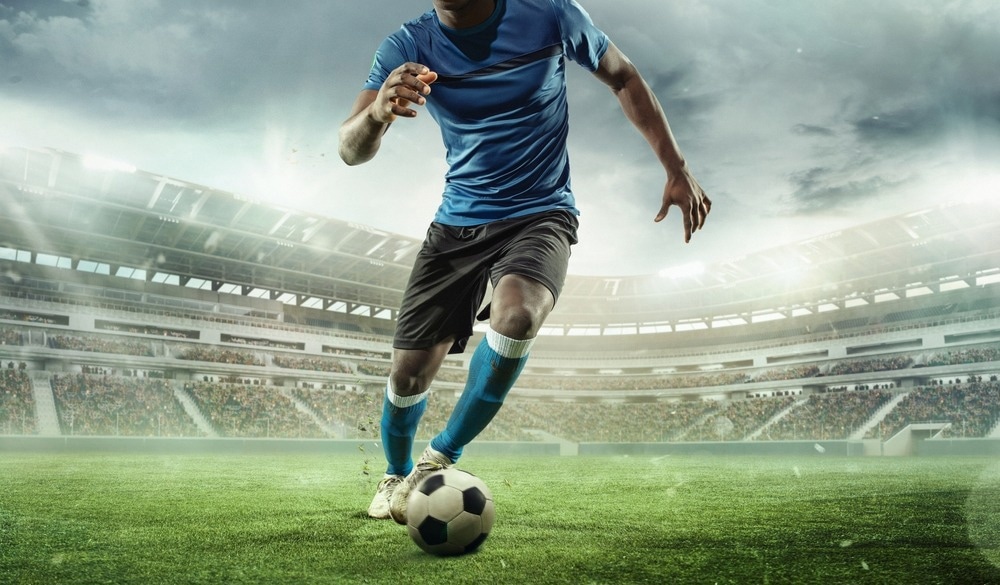In a recent study posted to the medRxiv* preprint server, researchers in Italy assess the duration of long coronavirus disease (COVID) and its impact on soccer (football) players.

Study: How long is the long COVID? a retrospective analysis of football players in two major European Championships. Image Credit: Master1305 / Shutterstock.com

 *Important notice: medRxiv publishes preliminary scientific reports that are not peer-reviewed and, therefore, should not be regarded as conclusive, guide clinical practice/health-related behavior, or treated as established information.
*Important notice: medRxiv publishes preliminary scientific reports that are not peer-reviewed and, therefore, should not be regarded as conclusive, guide clinical practice/health-related behavior, or treated as established information.
COVID-19 in athletes
Football, or soccer, is a physically demanding sport that necessitates high neuromuscular readiness, including reactivity and muscular strength. Even in mild cases, COVID-19 has significantly impacted professional athletes and has been associated with muscle weakness, inactivity, poor tolerance to physical exercise, and absence from sporting practice sessions.
COVID-19-positive patients can also develop myalgia and sarcopenia because of this infection. This phenomenon has led researchers to investigate whether COVID-19 may also affect muscle injuries in elite athletes.
About the study
In the present study, researchers examine the relationship between severe acute respiratory syndrome coronavirus 2 (SARS-CoV-2) infection and muscular injuries among professional soccer players.
Following the STROBE standards, the team performed a retrospective cohort study on soccer players from the Serie A and La Liga teams across the two seasons. Soccer players who changed their league levels and transferred to a foreign team were also included in the current study.
Players were categorized as either COVID-positive (C+) or COVID-negative (C-). All soccer players diagnosed with COVID-19 during the 2020-2021 season were categorized as ‘C+,’ whereas all players who were not infected during this time frame were categorized as ‘C-.’ Importantly, all soccer players who tested COVID-19 positive during the 2019-2020 season or off-season were not a part of the study. This created a database comprised of both pre-COVID data between 2019-2020 and post-COVID data between 2020-2021.
The current study examined the correlation between COVID-19 and the incidence of muscle injuries across the specified sports season by employing data reported by participating medical personnel and young athletes from several sports clubs. These individuals were the first to recognize the potential correlation between COVID-19 and muscle injuries among players.
Results
A total of 1,283 elite soccer players, consisting of 634 Serie A players and 649 La Liga players, were included in the current study. A total of 171 Italian championship players tested positive for SARS-CoV-2, while 165 players in La Liga were SARS-CoV-2-positive.
In the 2019-2020 Serie A season, there were no statistically significant differences in the mean number of muscular injuries observed between the C+ and C- groups. During the 2020-2021 season, the C+ group sustained significantly more muscular injuries than the C- group.
The multiple linear regression analysis found that during the 2019-2020 season, muscle injuries were primarily associated with the athletes' age, duration played, and the number of matches played. Conversely, during the 2020-2021 season, along with age, being C+ strongly increased the likelihood of sustaining a muscle injury, which was in contrast with the previous season.
Furthermore, the survival analysis indicated that the injury rates for the 2019-2020 season were not significantly different in the two groups. The disparity in injury rates noted between the two cohorts was statistically significant during the 2020-2021 season.
During the 2019-2020 La Liga season, there was no statistically significant difference in the mean number of muscular injuries reported by the C+ and C- cohorts. Comparatively, during the 2020-2021 season, the mean number of injuries was remarkably higher among C+ players than C- players.
During the 2019-2020 championship, age was the primary variable associated with muscle injuries, while the number of games played and duration played by athletes did not significantly affect the incidence of injuries. In contrast, the group variable exhibited a significant impact on the muscle injury rate during the 2020-2021 season.
Similarly, the survival analysis for the Spanish championship revealed that injury rates for the 2019-2020 season did not vary significantly, whereas, for the 2020-2021 season, the difference was statistically significant.
Conclusions
The current study identified a positive association between COVID-19 and an increased risk of muscle injury. In fact, the likelihood of experiencing a muscular injury was between 3.7 and 5.1 times greater among soccer players infected with SARS-CoV-2.
These findings emphasize the need for additional research into the impacts of SARS-CoV-2 infection on athletes. This information may help establish individualized rehabilitation protocols that can facilitate a safe return to play.

 *Important notice: medRxiv publishes preliminary scientific reports that are not peer-reviewed and, therefore, should not be regarded as conclusive, guide clinical practice/health-related behavior, or treated as established information.
*Important notice: medRxiv publishes preliminary scientific reports that are not peer-reviewed and, therefore, should not be regarded as conclusive, guide clinical practice/health-related behavior, or treated as established information.